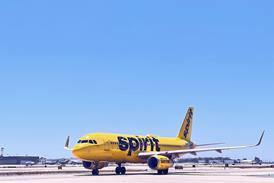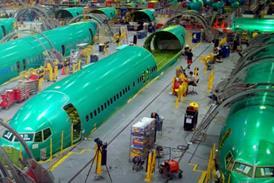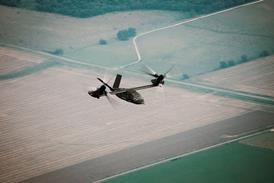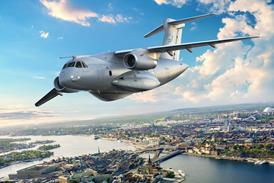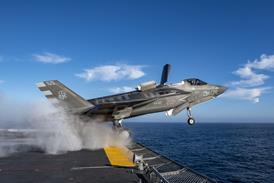New military engine programmes are proving a rarity in the post-Cold War era and the prospect of having an airframe application waiting, ready to go is even more exceptional. But such is the case with the US Army Aviation Applied Technology Directorate's (AATD) planned Common Engine Programme (CEP), which is set to become the first all-new turboshaft born and bred in the 21st century.
For years, the AATD has been pursuing seed technology to channel into a 2,235kW (3,000shp) replacement for General Electric's ubiquitous T700 turboshaft. It recognised early on that perpetual demand for extra operational performance and mission equipment for the Sikorsky H-60 Black Hawk and Seahawk helicopter family was quickly outgrowing the existing engine's ability to keep pace.
Shortly after the Pentagon's Defense Acquisition Board signed off the UH-60M and a follow-on operational requirement document (ORD) for even greater payload/range, the AATD met the Black Hawk and Apache programme executives to marry their need for more power with CEP. The result was an army commitment to a $140 million science and technology (S&T) demonstration from 2003 - a starting point for a preliminary flight rating test (PFRT) effort in 2007.
"The aim is for a flightworthy engine by the end of 2010 that could go into the UH-60X programme," says Sandy Hoff, AATD chief of power systems. CEP system development and demonstration (SDD) would then move in parallel with the growth Black Hawk programme, culminating in platform qualification and the start of production in 2013/14.
The ORD outlines a need to be able to lift externally at least 4,070kg (9,000lb) - although the army would really like closer to 4,540kg - over a minimum mission radius of 135km (73nm) in hot/high conditions. The helicopter is also required to carry a combat assault load of 11 troops over 275km, while maintaining a self-deployment ability at least equal to the UH-60L's current range of 1,950km.
Partial or near-term solutions include further growth of the T700 series or re-engining the Black Hawk fleet with the Rolls-Royce RTM322 turboshaft. Neither proposal passes muster with the AATD, which contends that increasing installed power must be accompanied by a cut in specific fuel consumption (SFC) if the helicopter is to meet the ORD.
"We have to do something because the current engine doesn't have the horsepower to pick up a 9,000lb load," says Hoff. "Our capability at the helicopter's current 21,000lb maximum take-off weight [MTOW] is to carry a 5,000lb payload 135km. The derivative engines will lift 9,000lb, but the most they can fly is 65km. What we need is a brand-new engine leveraging off all the technology out there."
The AATD-managed Joint Turbine Advanced Gas Generator (JTAGG) programme has been nurturing such technology over the past 12 years, under the US Air Force/Army/Navy Integrated High Performance Turbine Engine Technology initiative. Phase I of JTAGG, awarded to General Electric and Textron Lycoming (now Honeywell), demonstrated a 22% reduction in SFC and 64% better horsepower-to-weight ratio (shp/lb) relative to the T700.
Phase II, led by Honeywell and due for demonstration this year, has targeted a 30% improvement in SFC and 80% higher shp/lb, with a 20% cut in production and maintenance costs. The AATD, with Sikorsky and the programme office and based on a projected UH-60X MTOW of 12,000kg, puts CEP midway between JTAGG I and II. The engine requires 25% lower SFC and 60% higher shp/lb, with a 6,000h design life, to meet the ORD.
AATD plans to use a raft of potential new technologies to meet these goals. The compressor will have a pressure ratio "in the mid-20s", compared with the T700's 15:1, and will use fewer stages by using more efficient swept axial blades and leaned and tilted stators. "Under JTAGG, we developed a new splitter rotor and it does the pressure ratio in one stage what it used to take three axial stages to do," says Hoff.
In the combustor area, new liner designs show improvements in cooling, cost and the combustion process. This has brought improvements in the turbine section, where JTAGG has demonstrated inlet temperatures in excess of 1,540íC and reduced cooling air requirements. "We operate much hotter than the T700, but use less air to cool airfoils as we're doing it more efficiently," says Hoff.
JTAGG uses new materials, such as advanced titanium, titanium aluminide and nickel alloy for higher- speed, lower-weight impellers. New turbine materials include next-generation single-crystal, nickel-based blades of 1.9cm and use multi-pass cooling passages in a single-piece casting. Other advances available to CEP include hybrid ceramic bearings for higher rotational speed and loading, and improved brush seals.
"CEP will fit exactly the same position as the T700," says Hoff. "Weight projections are the same or a little less than the T700, but you're looking at 3,000shp rather than 1,800shp. Configurations vary as companies look at solutions such as single or double spool gas generation."
AATD expects to release an RFP for the planned S&T demonstration in mid-2002 and is looking towards industry to share the cost equally. The army estimates it will need $450 million for the follow-on PFRT and SDD phases, based on industry chipping in 10-20%. The programme will entail a second round of bidding in 2007 for PFRT and SDD.
Industry, in return for its investment, will have access to incorporating new dual-use technology in commercial engines and a share in a potentially large military market for CEP. When designing the engine, the army plans to consider the future needs of the Boeing AH-64D attack helicopter which would benefit from lower operating and support costs of CEP.
The army is also trying to enlist support from the USN and USAF. The navy has elected to build all-new MH-60Rs rather than rebuild 243 SH-60Rs, which could open the door to re-engining the helicopter. The AATD estimates that CEP would increase the Seahawk's time-on-station endurance by 46% to 273min at a range of 93km.
The USN has asked the AATD to study a potential MH-60S application for CEP in the airborne mine countermeasures role. The engine would enable the helicopter to provide a linear tow coverage over 83km, which is beyond the maximum continuous power of the current T700.
Hoff has no doubts about the business case for CEP "The potential numbers are huge. It will probably be the last engine to be developed for that platform for the next 30 years."
Source: Flight International

